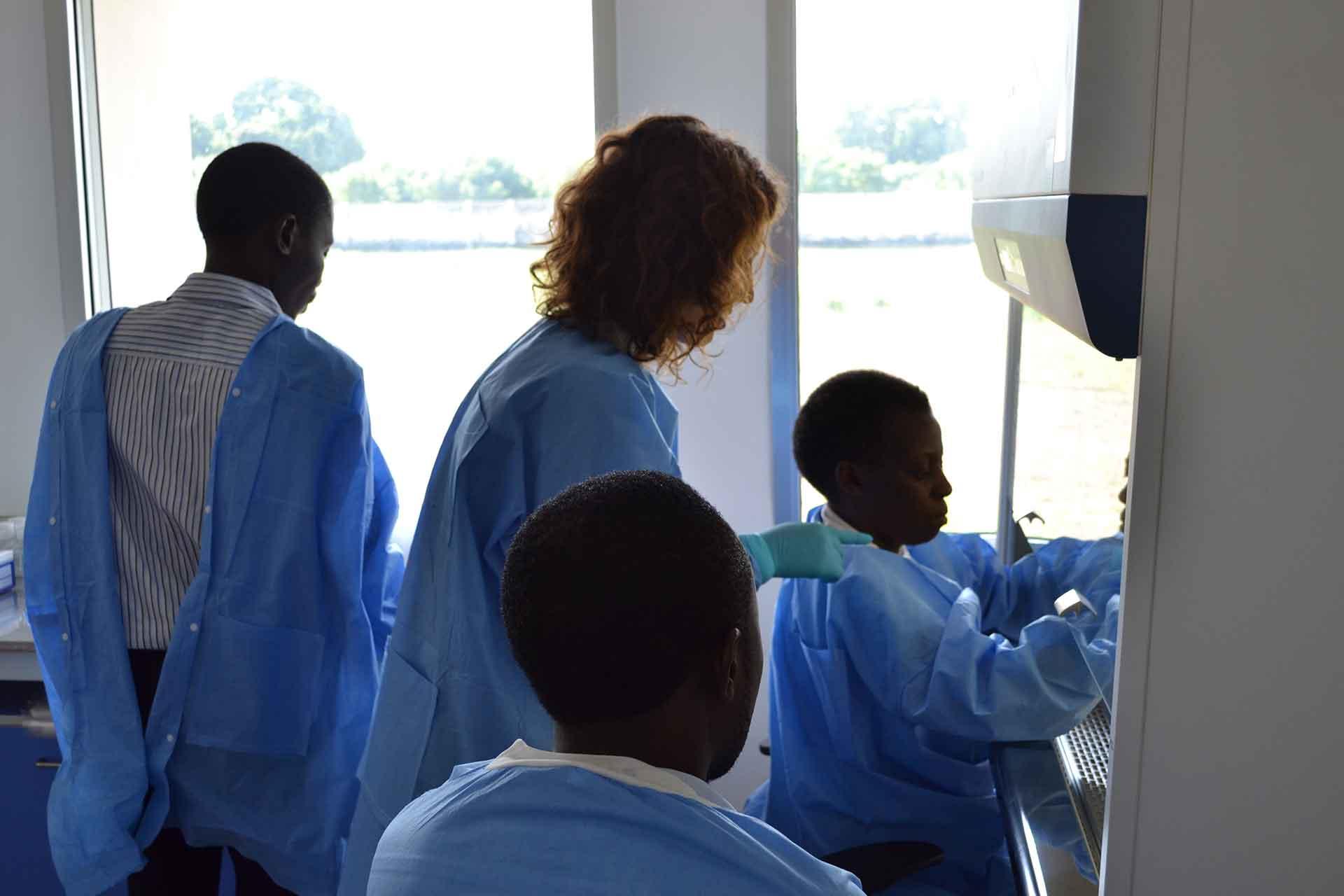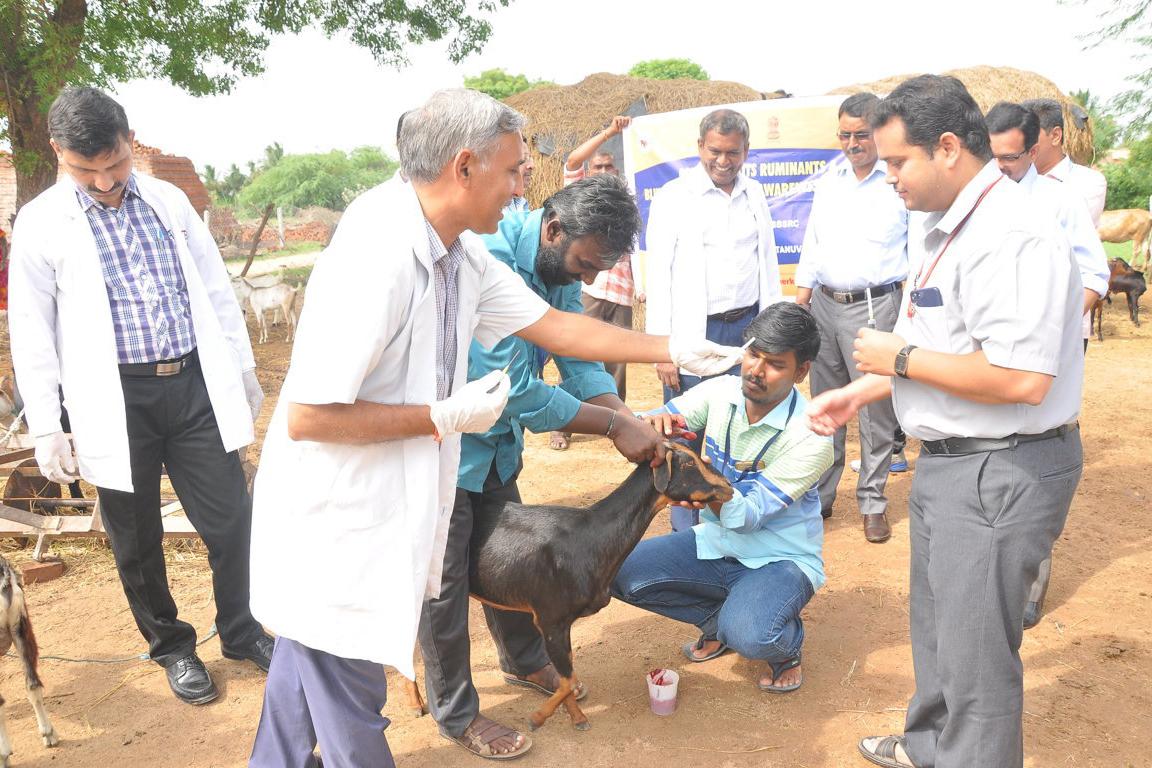Scientists at The Pirbright Institute provide critical services for the peste des petits ruminants (PPR) eradication campaign. Outbreaks of PPR, a viral disease that mainly infects goats and sheep, occur mostly across Africa, Middle East and India, which currently cost between US$1.4 billion and US$2.1 billion per year.
As one of three reference laboratories for the World Organisation for Animal Health (OIE) Pirbright plays a crucial role in the global effort to control and eradicate PPR. The OIE have recently highlighted the efforts of Pirbright scientists in their bulletin, demonstrating that the expertise they provide through training and advice is crucial in supporting the worldwide control and eradication of PPR by 2030.
Pirbright provides this support in a variety of ways, one of which is OIE’s twinning programme; Institute scientists visit laboratories across the globe to help them improve diagnostic and epidemiology capability, with a view to them receiving OIE reference lab accreditation. In 2016, Pirbright twinned with the Tanzania Veterinary Laboratory Agency’s Centre for Infectious Disease and Biotechnology (CIDB). Pirbright scientists have delivered diagnostic training and delivered a bespoke health, safety and biosafety course at CIBD.

“Training other laboratories to be proficient in PPR diagnosis is critical for enabling national surveillance in countries where the disease is endemic”, said Dr Carrie Batten, Head of the Non-Vesicular Reference Laboratories at Pirbright. “This year we will be training international visitors, so that they can learn necessary skills at our world class facilities and increase capability for PPR testing in their home laboratories.”
Pirbright also plays an important role in PPR control by identifying strains that are causing outbreaks. The reference laboratories recently received samples from Algeria that tested positive for PPRV, which Institute scientists are now sequencing in order to understand more about the strain through information gleaned from its RNA genome. This will allow them to monitor how the strain is spreading and advise on disease control.
The Pirbright reference laboratories are constantly improving existing tests or creating new ones to increase sensitivity and accuracy. Dr John Flannery and Dr Paulina Rajko-Nenow have recently developed new tests that will enable rapid diagnosis in the field.
A key component of Pirbright’s innovative diagnostic solutions is the capacity for scientists in the reference laboratories to collaborate with scientists doing basic science research on a single campus. This is supported by infrastructure that include state-of-the-art high and low containment laboratories in addition to large and small animal facilities that enables Pirbright’s world-leading experts to study viruses in their natural hosts.
Vaccine validation is also crucial for the control of any disease and these unique resources have enabled Pirbright scientists to show that the available PPR vaccines are able to protect animals from any of the four different PPR lineages. This is important for coordinating vaccine distribution across areas where outbreaks are occurring, and confirmed that global vaccine supplies can be used more flexibly during the eradication campaign.

and his team have developed and filed a patent application for the first PPR vaccine that enables infected animals to be differentiated from vaccinated animals (DIVA). This allows livestock owners to protect their animals whilst continuing to trade. Professor Parida’s team also travelled to India at the end of last year to run PPR vaccination and awareness campaigns where they provided farmers and vets alike with expert guidance on diagnosing clinical signs of PPR and what measures they could take to reduce its spread.
A team led by Dr Nick Lyons has highlighted the need for investigating current methods of outbreak control to better understand areas for improvement. The results of their investigation recently established a way of more accurately evaluating the cost of vaccination campaigns to farmers in Ethiopia, and found that vaccinations were far more expensive than previous estimates suggested, with significant vaccine wastage and opportunity costs that could negatively influence vaccine uptake.
Fundamental research into the PPR virus is also essential for understanding how it could pose a threat in the future. PPRV is classified in the same genus of viruses, Morbillvirus, as measles, a highly contagious virus that infects people. Dr Dalan Bailey, a Pirbright group leader working in this area, said, “My group is interested in what determines morbillivirus host range, for example why PPRV infects small ruminants while measles infects humans. We recently showed that a single PPRV mutation could allow it to bind to human cell receptors. Although this mutation is highly unlikely to lead to a virus that can cause disease in humans, it does highlight how narrow the restrictions to morbillivirus cross-species infection are in nature”.
These efforts exemplify many facets of the Institute’s mission to predict, detect, respond, understand and control viral diseases of livestock. The work Pirbright researchers are undertaking is vital in the fight against PPR, and the services provided by Pirbright’s reference laboratories are invaluable in the coordination of global efforts to achieve the goal of PPR eradication by 2030.
